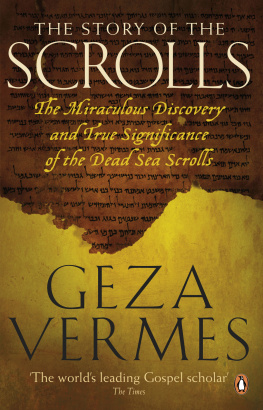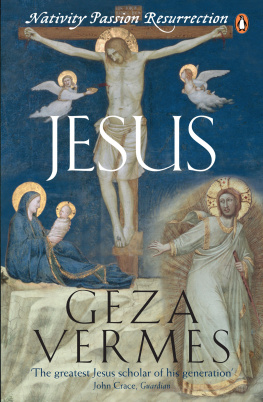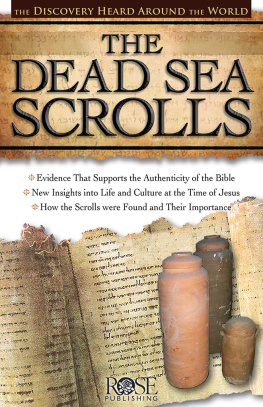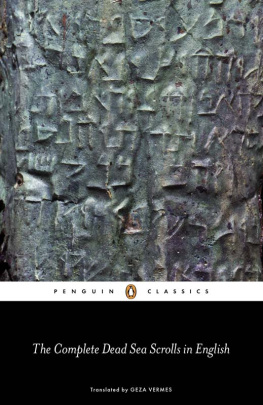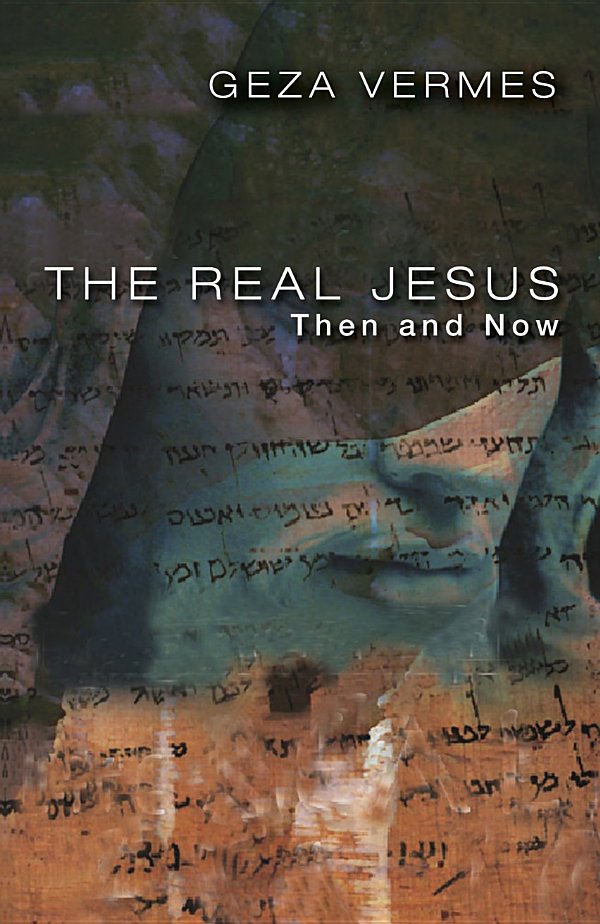The Real Jesus

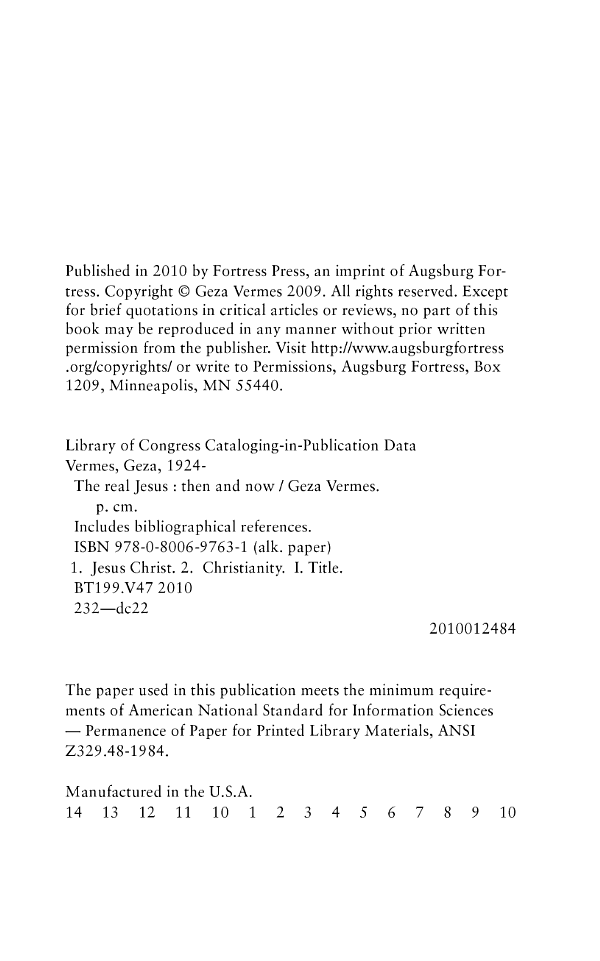
Preface
In years gone by, not a few university colleagues of mine have considered it below their dignity to engage in what the French call haute vulgarisation, the presentation of complicated issues of scholarship to a broad readership avoiding the use of technical jargon and requiring no prior familiarity with the subject. This attitude, in which obscurity parades as profundity and lack of perspicacity is assumed to indicate advanced learning, often derives from the inability of specialists to express themselves with clarity and simplicity. I would like to think that I was born with the gift of easy communication, being the son of a life-long journalist. The smell of the printers ink is among my early childhood memories and, at the age of 12, during the Berlin Olympics, I ran the sports column of my fathers paper. In 1971, when I began to edit the Journal of Jewish Studies, I felt I was reviving the family tradition tragically interrupted in 1944 by the murderous lunacy released on the innocent in Hitlers empire. This background will explain why even my most creative works, like Jesus the Jew, were meant to be easily accessible to any educated person interested in the subject. Indeed, on retiring from my Oxford professorship, I expressly vowed to dedicate myself to sharing with the widest possible circles the insights gained through half a century of wrestling with ideas springing from the interaction between Judaism and Christianity.
After my early apprenticeship in the 1930s, I decided in the 1980s and 1990s to try again my hand at writing for the press, but most of my journalistic activity, my addresses at literary festivals as well as my participation in radio programmes and television documentaries date to the twenty-first century. The various bits that follow were originally published in dailies, weeklies and monthlies, especially in The Times, the Independent, the Guardian, the Daily and the Sunday Telegraph, and Standpoint. I must admit that I found journalisms constraint to express myself quickly and in an easily readable style highly exciting and enjoyable.
Friends and above all my wife have prevailed on me to include a selection of them between the covers of a single volume together with lectures and talks which have never appeared previously in print. I am deeply indebted to SCM Press and, in the United States, Fortress Press, publishers of my first Jesus trilogy Jesus the Jew, Jesus and the World of Judaism (renamed Jesus in his Jewish Context) and The Religion of Jesus the Jew for undertaking the publication of the present miscellany of essays. I sincerely hope that their admirable courage in these days of financial squeeze will prove worthwhile.
The articles and lectures assembled in this volume, like my preceding scholarly publications, reflect the views on religious matters of a liberal thinker, free of the constraints of churches, synagogues and their secular equivalents, who has tried throughout his life to separate reality from myth. The topics treated in these pages converge on the main themes of my previous academic research: the historical Jesus, his real life and authentic teaching, and the sketching of the genuine portrait of this holy Galilean Jew liberated from the religious images superimposed on it by theological speculations of his non-Jewish followers over two millennia.
Readers familiar with my writings will not be surprised to discover that the study of the Dead Sea Scrolls, my first academic love affair, is still firmly represented in this volume, anticipating The Story of the Scrolls, a truthful account of Qumran to appear early in 2010. In the present volume will also figure a variety of reflections on Jewish/Christian subjects, ranging from taxcollectors in the age of Jesus to the conclave electing the successor of Pope John Paul II and from the great Da Vinci distraction, to use the headline of The Times, to an analysis of the implications of the visit by the son of a Tehran Jewish school caretaker (the president of the State of Israel) to the son of a Bavarian policeman (Pope Benedict XVI) amid all the pomp and ceremony associated with a Vatican state event.
The reaction of the British press to a TV documentary on Jesus produced by the infant Channel 4 in 1984 may both amaze and amuse readers today. Also they may find appropriate in 2010, the year following the bicentenary of Darwins birth and the sesquicentenary of On the Origin of Species, some thoughts on the evolution of religious ideas accompanied by lighthearted comments on the constant preoccupation with sex on the part of the elderly celibate clerical leaders of the Roman Catholic Church.
Geza Vermes
Oxford
Part One
Jesus
The Age of Jesus
In 1906 Albert Schweitzer solemnly declared the quest for the historical Jesus to be an unattainable task, yet despite his eloquent funeral oration the Jesus of history has refused to lie down or disappear. In fact, with the exception of a handful of inveterate doubters, most present day scholars go to the other extreme and take the existence of Jesus so much for granted that they do not bother to inquire into the meaning of historicity. Yet the truth is that Jesus and the movement which arose in his wake did not exist in vacuo: they were integral parts of first-century Jewish society, a society formed by the forces and influences of previous generations and by the impact of Hellenism and of the political power of Rome. These Jewish and Graeco-Roman influences interacted and created the matrix out of which Christianity emerged.
The purpose of this book is to make the reader aware of the amalgam of ideas, inspirations and impulses that penetrated the age of Jesus.1 To achieve this purpose in a vivid fashion, I have chosen to present a series of biographical vignettes. The wider world will be made tangible through the depiction of individuals, who in their various ways were influential in the making of history. Whos Who in the Age of Jesus portrays personalities from the New Testament, from the works of first-century Jewish writers, from rabbinic literature and from the sources of Graeco-Roman history. These personalities occasionally appear in various records. Rulers of Judaea, Jewish leaders and Roman dignitaries such as Herod the Great, Antipas, Annas and Caiaphas, Gamaliel the Elder, Augustus, Tiberius, Pontius Pilate, etc., are mentioned in the New Testament, and some New Testament characters (Jesus, John the Baptist, James the brother of the Lord) make a fleeting appearance in Josephus and in the accounts of Roman historians like Tacitus. Other Jewish characters like Hillel the Elder, Honi and Hanina ben Dosa, Jesus son of Ananias, who are recorded in Josephus or in rabbinic literature, shed important light on the Gospel story. In consequence, a multi-pronged approach to the age of Jesus promises to open up unexpected fresh vistas.
The broader scope thus conceived demands also an elastic definition of the time scale of the inquiry. The net will be cast wider than the presumed life span of Jesus (c. 6/5 BCE30 CE). One reasonable starting point would be the Maccabaean revolution against the Seleucid (Syrian) Greek Empire in the 160s BCE, when Jews first experienced religious persecution. The forceful and ultimately successful Jewish resistance to Hellenistic tyranny led to the creation of an independent Jewish state, which was governed for the best part of a century (15263 BCE) by the priestly family of the Maccabees-Hasmonaeans. However, to call 150 years of the pre-Christian era the age of Jesus seems something of an exaggeration. Hence it is preferable to choose instead the next significant watershed in Jewish-international history, the switch from the Seleucid-Greek to the Roman rule in Palestine, inaugurated in 63 BCE by Pompeys conquest of Jerusalem. This happened less than two generations before the birth of Jesus. The ideal finishing line would lie roughly two generations after the crucifixion. However, the absence of any remarkable event in the closing years of the first century CE prompts one to opt for the end of the second Jewish uprising against Rome in 135 CE. These two boundary posts encompass one of the very crucial periods of the intellectual and religious history of the western world.




